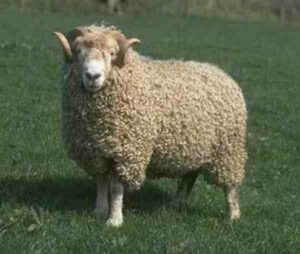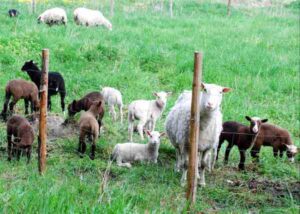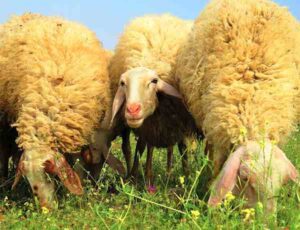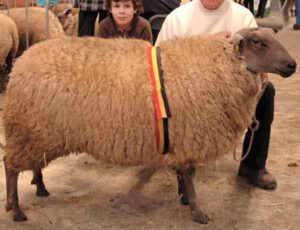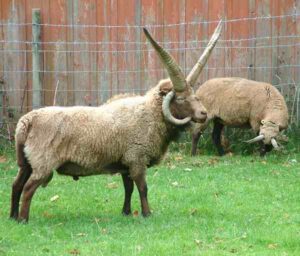Sheep eyes are very important and special organ of a sheep’s body. Because their eyes have horizontal pupils that give them a wide field of view, almost 360 degrees around them. And this wide vision helps them to see predators coming from many directions while they are grazing.
Sheep eyes also have a special layer behind their retina that reflects light. This feature helps them to see better in low light, especially during early morning and late evening. This feature also make the animals very good at staying alert and safe from danger.
Anatomy of sheep eyes
Sheep have horizontally elongated pupils which allows for a wide field vision (almost 360 degrees around them). The retina of a sheep’s eye is adapted to maximize peripheral vision and it is less specialized for detailed central vision compared to predators. And this adaptation helps the sheep to be more aware of their surroundings. Sheep have relatively large lens as compared to the eye size. This feature helps the animals with focusing at different distances and also enhances their ability to see in different light conditions. And the cornea is relatively flat which helps to a wide field vision.
Sheep eyes contain a layer of cells called the tapetum lucidum. Tapetum lucidum reflects light that passes through the retina back into the eyes. And this helps to improve their night vision by increasing the amount of light available to the retina. The sclera (white part of the eye) is more visible in sheep than in some other animals. This white part of the sheep eyes contribute a lot to their overall appearance and may also aid in visual communication with other sheep. And the iris is generally of light color in sheep. The unique shape and color of the iris make their overall appearance distinctive.

Functions of sheep eyes
Eyes are a very important organ of a sheep’s body and they have many functions. Here we are trying to list the primary functions of sheep eyes.
- Wide Field of Vision: Sheep eyes are positioned on the sides of their heads, and the eyes give them a nearly panoramic field of vision. And this wide vision helps them to spot predators from various angles, even while they are grazing.
- Detection of Movement: The horizontal elliptical pupils and the wide positioning of the eyes helps the sheep to detect the movement and changes in their surrounding environment more effectively. This also helps them to react quickly to potential threats from predators.
- Improved Low-Light Vision: The reflective layer of sheep eyes (tapetum lucidum) improves their vision in low light conditions by reflecting light back through the retina. And this adaptation allow the sheep to see better at dawn and dusk. The predators become more active during this times.
- Limited Binocular Vision: Sheep have limited binocular vision (the overall of the visual fields of both eyes). And this features affects their depth perception, and is balanced by their ability to detect motion from a distance.
- Color Vision: Sheep can distinguish between some colors, but not as many as humans. They can detect contrasts in their environments. This feature helps in foraging and identifying potential threats.
- Constant Vigilance: The combination of enhanced low-light vision, wild field view, and motion detection allows the sheep to remain constantly vigilant to potential dangers. And all these features are essential for their survival, especially in the wild.
Understanding sheep vision can impact sheep farming practice. Because you can enhance the sheep handling techniques, improve flock management and optimize grazing strategies by conserving how sheep perceive their environment. Consider sharing this article with your friends and family members if you find it helpful. Good luck and may God bless you!


